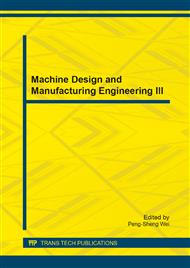p.881
p.886
p.894
p.901
p.906
p.909
p.915
p.920
p.926
Intelligent Quilt Based on Conductive Textile Materials, Smart Flexible Sensors, and Composite Charging Technology
Abstract:
In this paper, domestic and foreign progress and some of the results obtained in the field of conductive textile research are introduced. An intelligent quilt concept is conceived. The intelligent quilt is made from natural plant improved by genetic technology. It has certain “conductivity”, which is not necessarily the true current conduction, but may be the conduction of some weak “unique signal” sent out by some specially bred textile fibers organization. The research results of flexible sensor are applied to trace gas detection in the intelligent quilt. Also, new energy supply strategy with combination of. Bioenergy technologies and other energy are employed. The proposed intelligent quilt may be applied to the monitoring biochemical and autonomic parameters of the human body and provide helpful suggestions on people’s health status.
Info:
Periodical:
Pages:
926-930
Citation:
Online since:
July 2014
Authors:
Price:
Сopyright:
© 2014 Trans Tech Publications Ltd. All Rights Reserved
Share:
Citation:


